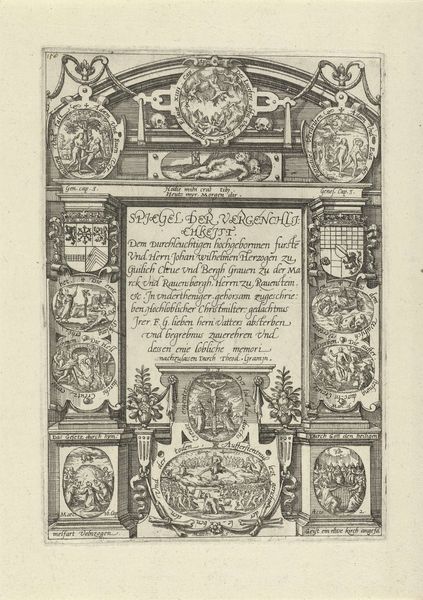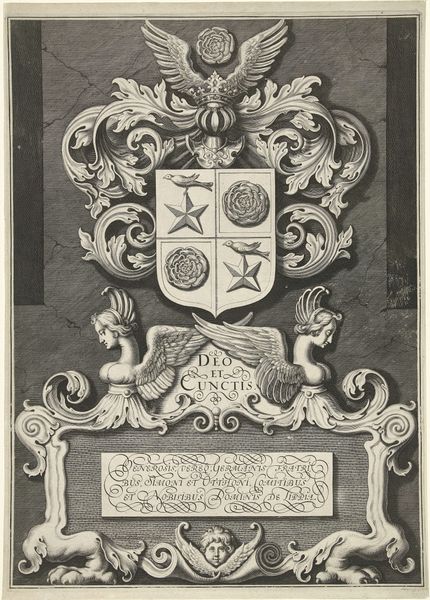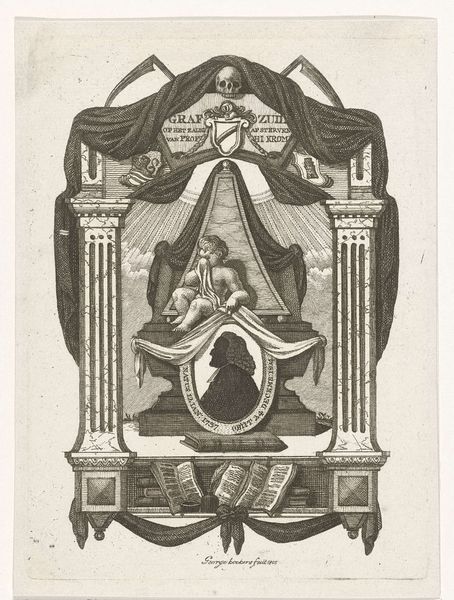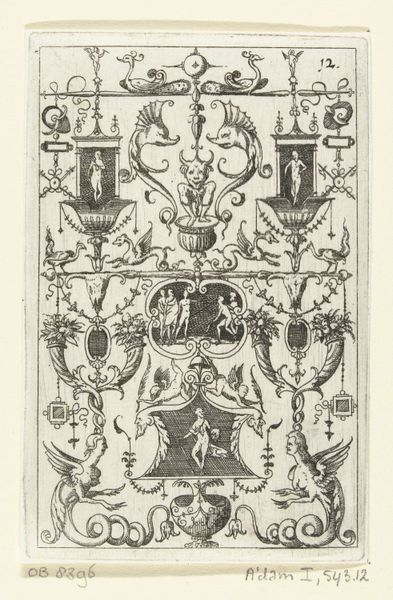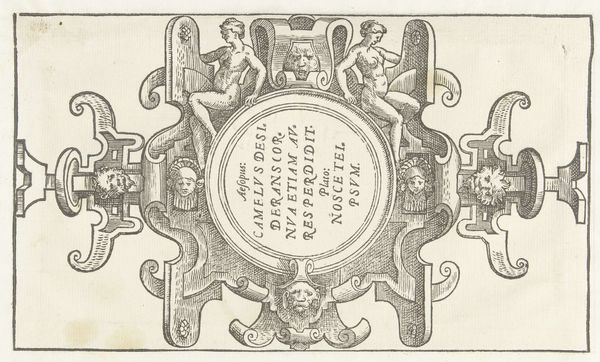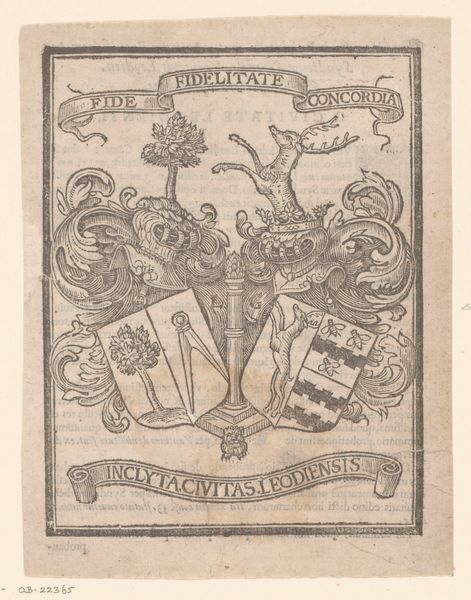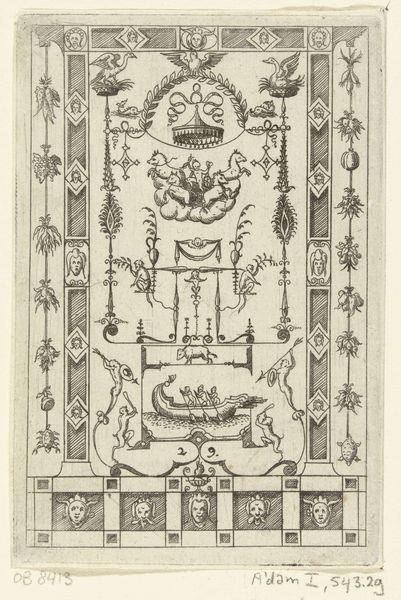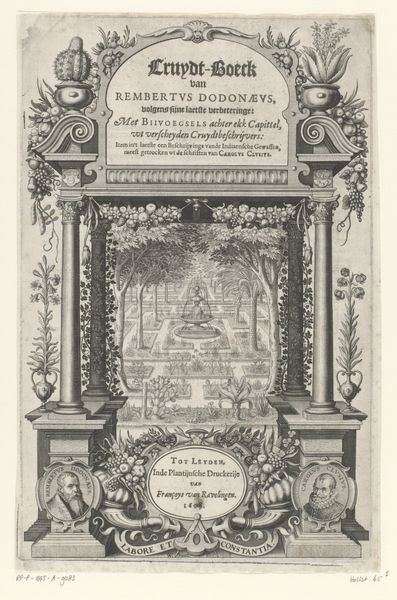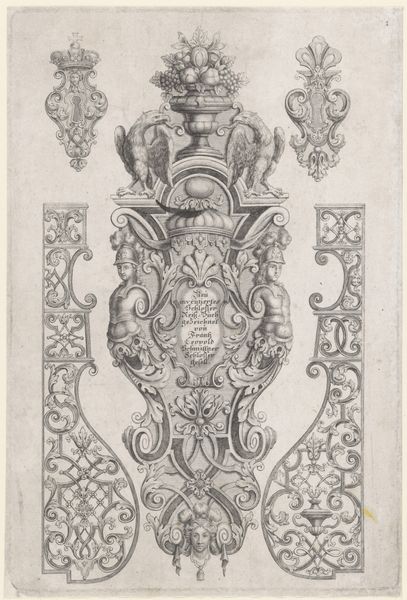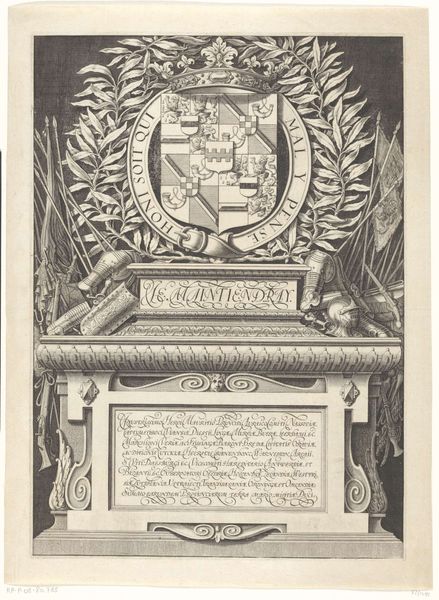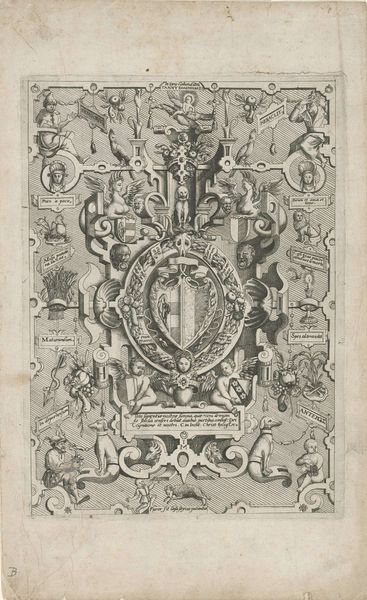
Grafmonument van Anthonius Candidus de Hoensbroeck-Geul en Anna Maria van Berghe, alias Trips 1831 - 1904
0:00
0:00
drawing, print, engraving
#
drawing
#
medieval
#
pen drawing
# print
#
vanitas
#
history-painting
#
engraving
Dimensions: height 242 mm, width 151 mm
Copyright: Rijks Museum: Open Domain
Curator: We're looking at a fascinating engraving from the period between 1831 and 1904, titled "Grafmonument van Anthonius Candidus de Hoensbroeck-Geul en Anna Maria van Berghe, alias Trips" by Arnoud Schaepkens. It’s a rather ornate memorial depiction, made using engraving techniques. Editor: My immediate impression is one of somber grandeur. The density of the imagery—the coats of arms, the lettering, even the skull at the base—it creates a sense of overwhelming historical weight. A heavy history! Curator: Indeed. What we're seeing is very much tied to the era’s obsession with lineage and remembrance. The central coat of arms prominently displays the family’s heraldry, signifying status and historical importance. Editor: I see it reflecting a society deeply invested in preserving aristocratic power through carefully curated visual narratives. The vanitas elements—like the skull—juxtapose the pomp with reminders of mortality, a classic power play: "We may die, but our name and legacy will endure.” Curator: Precisely. And look at how the composition is framed. The columns flanking the central image, adorned with even more coats of arms, function like gallery walls. This image actively constructs a specific visual representation of nobility and its right to historical memory. Editor: It feels deeply exclusionary, doesn’t it? All this carefully constructed imagery speaks volumes about who gets remembered and whose stories are actively erased. It’s a celebration of power consolidated and maintained across generations, through very particular and curated representations. Curator: But is there something more complex in it than that? Isn't part of historical analysis looking for more points of view in these types of commemorative items? The attention to detail suggests this was not just a simple proclamation of nobility but also a heartfelt, personal statement. Editor: I'm more inclined to examine its cultural implications: it prompts vital questions about who crafts and controls the narrative, and who gets overlooked. We should be skeptical of how images of power solidify hierarchies. Curator: Looking at the image details like the typography or the drawing style is revealing. They take us into an era, telling their own story. Editor: Understanding it through the context of power structures helps us better analyze both this particular period, and how similar representation patterns endure through our own history. Curator: So, reflecting upon this piece, its strength lies in revealing a rich, layered historical world. Editor: Yes, it is important to unravel power, image, memory, and visibility in a highly mediated past.
Comments
No comments
Be the first to comment and join the conversation on the ultimate creative platform.
